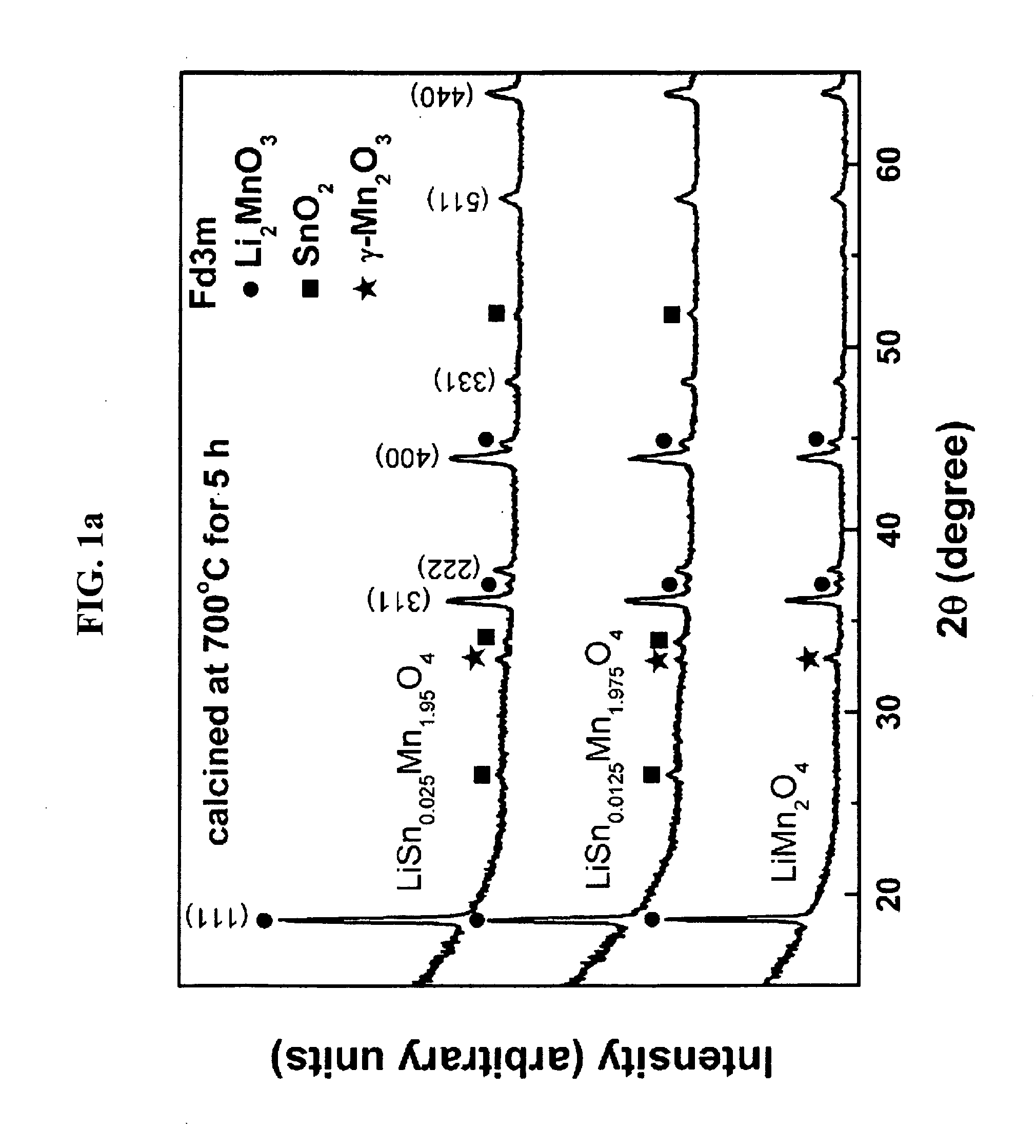Lithium-manganese-tin oxide cathode active material and lithium secondary cell using the same
a technology of lithium-tin oxide and active material, which is applied in the direction of cell components, electrochemical generators, manufacturing tools, etc., can solve the problems of reducing the charge/discharge capacity, affecting the use of lithium-cobalt oxide and lithium-nickel oxide, etc., to achieve the effect of reducing the distortion of jahn-teller, increasing the charge/discharge capacity, and reducing the distortion
- Summary
- Abstract
- Description
- Claims
- Application Information
AI Technical Summary
Benefits of technology
Problems solved by technology
Method used
Image
Examples
example 1
[0025]Preparation of LiSn0.0125Mn1.975O4 cathode active material (x=0.025)
[0026]Using a mixture of Li2CO3, MnO2 and SnO powders in a weight ratio of 19:80.2:0.8, the procedure of Comparative Example 1 was repeated, so as to obtain a LiSn0.0125Mn1.975 O4 cathode active material.
example 2
[0027]Preparation of LiSn0.025Mn1.95O4 cathode active material (x=0.05)
[0028]Using a mixture of Li2CO3, MnO2 and SnO powders in a weight ratio of 19:79.4:1.6, the procedure of Comparative Example 1 was repeated, so as to obtain a LiSn0.025Mn1.95O4 cathode active material.
[0029]XRD (X-ray diffraction) patterns of the calcined (yet not sintered) powders prepared during the procedure of Comparative Example 1 and Examples 1 and 2 were shown in FIG. 1a, in which contaminant peaks of Li2MnO3, γ-Mn2O3, SnO2, etc. were detected. XRD patterns of the resulting (sintered) cathode active materials of Comparative Example 1 and Examples 1 and 2 were shown in FIG. 1b, in which the contaminants peaks were disappeared and only the peaks for the spinel structures of the desired cathode active material were shown. This means that the final sintering process made Sn ions introduced and substituted into the spinel structure.
[0030]Densities of the cathode active materials prepared in Examples 1 and 2 mea...
PUM
| Property | Measurement | Unit |
|---|---|---|
| temperature | aaaaa | aaaaa |
| charge capacity | aaaaa | aaaaa |
| charge capacity | aaaaa | aaaaa |
Abstract
Description
Claims
Application Information
 Login to View More
Login to View More - R&D
- Intellectual Property
- Life Sciences
- Materials
- Tech Scout
- Unparalleled Data Quality
- Higher Quality Content
- 60% Fewer Hallucinations
Browse by: Latest US Patents, China's latest patents, Technical Efficacy Thesaurus, Application Domain, Technology Topic, Popular Technical Reports.
© 2025 PatSnap. All rights reserved.Legal|Privacy policy|Modern Slavery Act Transparency Statement|Sitemap|About US| Contact US: help@patsnap.com



